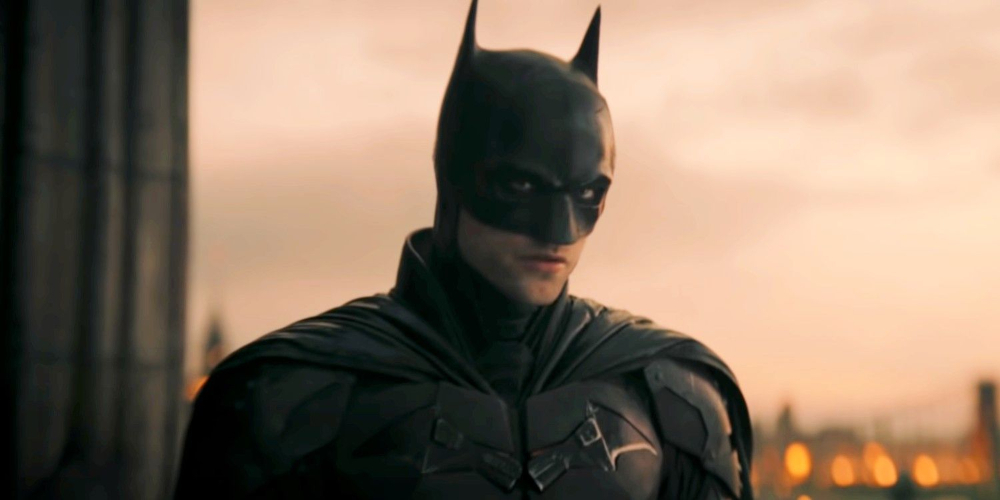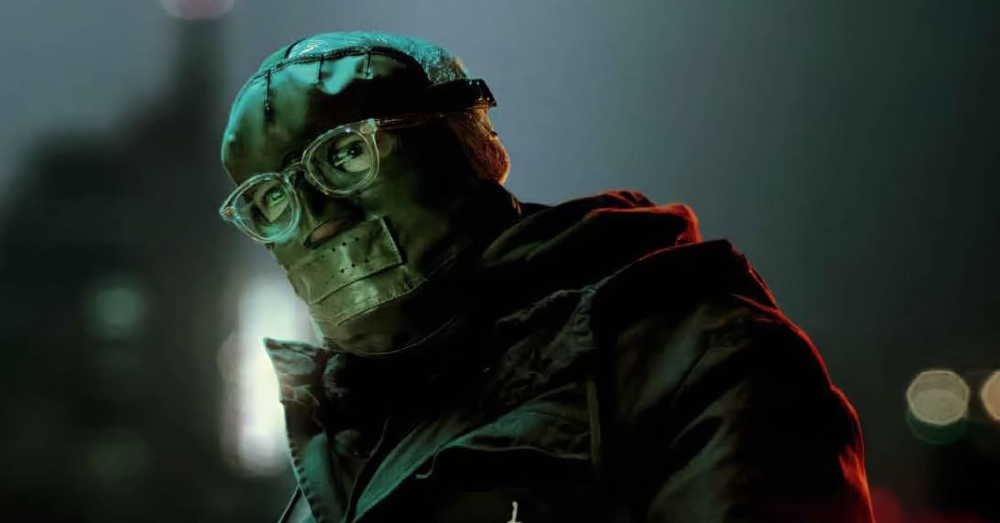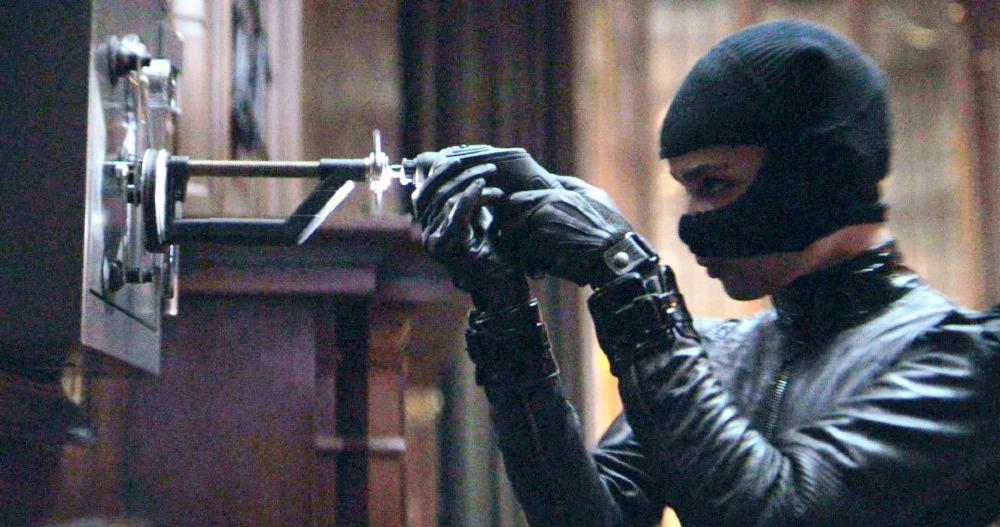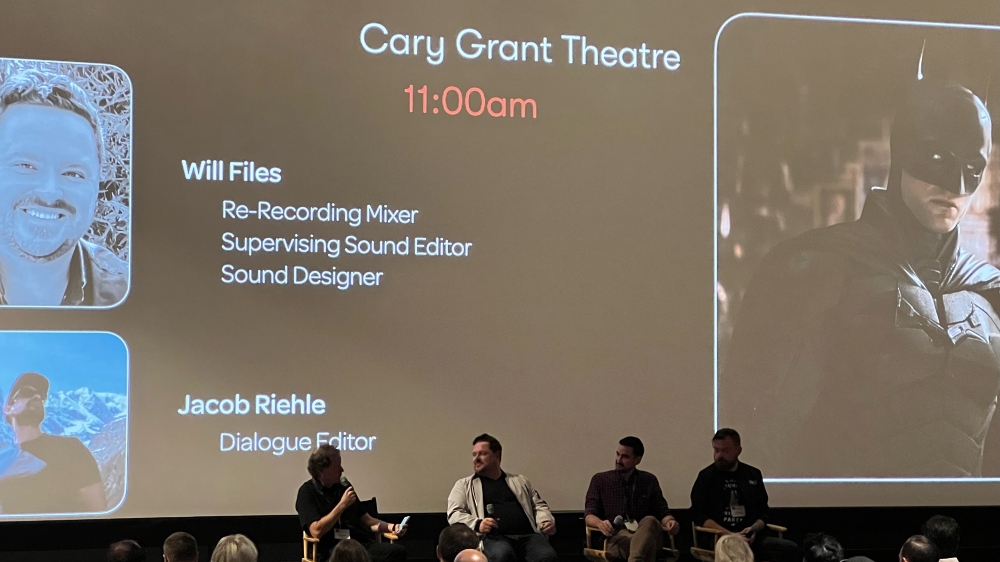
Matt Reeves‘ The Batman hit theaters earlier this year and went on to gross nearly $800 million on a production budget of $200 million, indicating that Warner Bros. is onto something with this dark depiction of the Caped Crusader.
Robert Pattinson dons the cape and cowl this time around, and the film finds Batman going after a sadistic killer targeting Gotham’s political figures and dealing with the city’s basic corruption, as well as the role his own family has played in it.
Three members of the movie’s sound team — Re-recording Mixer/Supervising Sound Editor/Sound Designer Will Files; Dialogue Editor Jacob Riehle; and Sound Designer Lee Gilmore — discussed their work at Mix’s recent Sound in Film & TV confab on the Sony lot. Other team members who were not there include Skywalker Sound Supervising Sound Editor Douglas Murray; Sound Effects Editor Diego Perez; and Sound Designers Craig Henighan and Chris Terhune.
The first topic the panel addressed was collaboration, and keep in mind that the film’s Composer was Michael Giacchino.
“Except for Doug, we were all working together in the shop at Warner Bros, using shared storage, so it was easy to pass things back and forth,” said Files. “On the FX side, I might make sounds and give them to Lee and Diego, and they make tons of sounds and cut them together. Then it gets to the point where they tell me to take a pass, we do some mixing and send it to the Avid cutting room as stems. They’ll integrate them and the mixer does a mix against the dialogue and music in the Avid. Then we’ll all preview it in a big room, all of it coming out of the Avid.
Riehle explained how much of the dialogue was recorded during production, focusing on the Bat Suit.
“It was made with grooves in the chest plate to put microphones in it, and most of the dialogue is from those,” he said. “For example, when Lt. James Gordon (Jeffrey Wright) and Batman are whispering to each other, all the audio comes from the Bat Suit.” He added that the Riddler (Paul Dano) had two mics in his mask. “I’d hear him breathing all the time — and it’s terrifying,” said Riehle.

Files agreed that the intensity of Dano’s voice is “all performance.” In addition to wearing earwigs so he could hear himself perform, Dano also wanted to run his voice through a voice changer in real time. “We did all kinds of versions,” said Files. “But Matt wanted it simpler and simpler, so we ended up doing a pitch shift.”
In the scene when Batman fights a group of thugs on the grungy train platform, Files pointed out that Gotham is “not shiny, and this scene exemplifies our approach.” “We wanted it to sound messy, like a mud fight,” he said. “We didn’t ever want this to sound like a superhero movie.” He revealed that he used Avid Heat (Harmonically Enhanced Algorithm Technology), an option for ProTools that he described as “a holistic mixer for every track.” “Using harmonic distortion and saturation make digital a little more nonlinear,” he said. “I wanted more irregularity in my sound.” Files also used Soundtoys’ Radiator, a dual drive tube input channel and EQ, which is based on the 1960s Altec 1567A tube mixer.
“We were trying to give an impression of loudness without hurting your ears, which is about controlling high frequencies,” said Files. “To emulate the tape sound where the high frequencies will compress earlier than the low frequencies — but give the impression it’s almost too loud for the microphones.”
Riehle reported that Terhune “did an amazing job on the surveillance recording,” and Files said that, “the production sound mixer captured responses of the locations.”
“We have very little ADR, but we were able to apply literally the same reverb on their voices to things like the TV, the Nirvana song playing in the room, the Foley,” said Files. “Matt really likes reverb.”
They showed a clip of Batman reconnoitering with Selina (played by Zoe Kravitz) at the club within the club and the ensuing battle.
“This scene was incredibly challenging,” said Files. “It was really hard to get the perspective shifts right. Selina is wearing these AI contact lenses and two-way earbuds, and Matt said we had to make it feel like Batman is there with her, still hearing it as if she’s wearing omnidirectional earbuds.” He added that “one of the fun things about Atmos is that “you can take advantage of all five front speakers.” “We’d pan all the objects across the screen,” said Files. “We’re using all parts of the room on a constant basis.”

Files added that the film is both “very quiet and very loud.” “We had the chance to do a home theater mix. That was important, otherwise, the home viewer would be chasing their volume up and down. We wanted to maximize dynamics, so we usually brought the low audio up rather than the high audio down,” he said. “One of the reasons I like working for Matt is that he’s as into these constant changes in perspective as I am.”
“It’s great to create this immersion,” added Files. “It was so tangible that we felt like we were living in Gotham for nine months. It’s a grim place, but a beautifully grim place and we enjoyed marinating in that.”
Another highlighted scene that featured constant perspective shifts saw Batman chasing the Penguin (Colin Farrell) in the Batmobile.
“The trick to getting this to work, to keep it fresh, was to feel the weight of the car and also its high-tech rubber tires,” said Files. The sound was recorded out in the desert with a 1972 Bronco, which Files described as “a 1970s Ford V8, which has this nasty fire-breathing sound.”
“Ford has an irregular firing order to the cylinders,” he said. “We tried Hemis, supercharged, turbocharged, but the base engine is a 50-year-old V8 pushed to the limit.” He revealed that they also “used an old Gary Rydstrom trick.” “We found something punchy to lead the audience to the next trick,” he said. “We did that by picking sounds already in the scene to emphasize.”
The panelists also talked about their process of working together. “They’re working into my mix template,” said Files. “From Day 1, we’re putting in what we’ll be mixing and I give them starters on what I think we’ll need.” As time went on, however, there were so many sound design elements that were functioning like music that “we had to reorganize the template to have control of the sound design elements in the Avid.” “Quite a bit of plumbing went along with that, but it was worth the trouble,” he said.
Gilmore pointed out that they placed assets in Atmos to “try to get a rough idea of where it’ll go and play in the room,” while Files noted how helpful that was for him. “That way, I’ll know what [the assets] are for, even if I end up modifying them later on,” he said. “But at least half the time they’re in the right place.”
“We’re working in a room with good sound, so there aren’t a lot of surprises,” added Files. “Even when we went to the final mix, it was very representative of what Matt heard in the last screening we did.”

Regarding the original sound assets, Files noted that “luckily, being on a studio lot, we have lots of environments and also quiet cutting rooms. Every room has mics, so we could bring something in and record it right there,” he said. “We have huge libraries and are leaning on them heavily, but it’s always cool to do original recording.”
Files also recounted the search for the sound of Batman’s boots. “Everybody on the team brought in their boots,” said Files. The winner was a pair of oversized snow boots Files bought when he went to Sundance in the winter. “Because they were too big, they had a resonate cavity in them and they were soft rubber,” he said. “They sounded heavier and distinct from other peoples’ sounds.”
Riehle noted that, in the movie, “it is so cool for us to hear Batman before we see him.”
When asked to give advice to aspiring sound professionals, Files urged attendees to watch movies.
“Matt and I connected early on because we are fans of the same films,” he said. “Watch the landmark films of our craft.”
He added that he tries to “mix in longer runs so I don’t get stuck on the little bits.” “Especially working with Matt, we do get in the weeds a lot,” he said. “But then it’s always good to roll back 100 feet and listen to it in context. It’s important to step back and put your audience hat on.”
For more coverage of the Sound for Film & TV event, click here and here.





